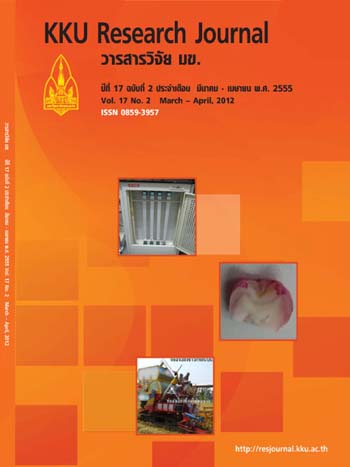A comparison of remineralizing effect of resin sealant with amorphous calcium phosphate, resin sealant with fluoride and glass ionomer sealant: in vitro.
Main Article Content
Abstract
The purpose of this study was to compare the remineralizing effect of sealants after lesion formation on
occlusal surface of human upper premolar. Artifi cial lesions were created by immersed teeth in demineralizing
solution pH 4.4 at 37°C for 96 h. Samples were randomly divided into 4 groups 1) resin sealant with fl uoride
(Teethmate-FTM) 2) resin sealant without fl uoride (DeltonTM) 3) resin sealant with amorphous calcium phosphate
(AegisTM) and 4) glass ionomer sealant (Fuji VIITM). Each tooth was cross-sectioned through artifi cial caries lesion
into 2 pieces, control piece and experimental piece. Sealant was placed on white carious lesion on experimental
piece of each group of sealants. All of samples were then subjected to pH cycling model for 10 days. Enamel
hardness was evaluated by cross section vicker microhardness analysis and the depth of lesions were examined
under the polarized light microscope.
The results demonstrated that mean of the different of vicker hardness number of control piece and experimental piece (ΔVHN) at 110 μm depth was signifi cantly difference between Fuji VIITM and DeltonTM(P = 0.001).
The polarized light microscopy demonstrated that enamel of experimental piece had less lesion depth
than control piece in groups of Teethmate-FTM , AegisTM and Fuji VIITM. While DeltonTM showed similar depth
of lesion in both experimental and control piece.


